Caving in the Capital Region

My lifelong search for adventure has sent me hurtling out of an airplane from 9,000 feet, swimming with sharks, and climbing frozen waterfalls while blocks of ice tumbled down the mountain around me – just to name a few. But until one morning in late February, I had never strapped on a helmet equipped with a headlamp and dropped through a small, dark hole in the earth to see what thrills awaited underground.
I’d been curious about caving, also known as spelunking, as far back as I could remember. As a child, I would visit a small diner in rural Albany County with my grandfather and hear stories about the vast network of caves beneath the woods out back. Curiosity never quite pushed me to action, but I’d have nagging thoughts about those caves whenever I passed that remote diner over the next 25 years.
The thing about caving, beyond commercial caves like Howe Caverns and Secret Caverns, is that it has retained much of its mystery, even in the age of search engines and satellite maps that can tell you anything or bring you anywhere. If you’re dismayed about the apparent lack of wilderness left in the world, do an internet search for directions to any wild caves in the area. If you’re lucky, you might find the name of a road that’s supposedly in the vicinity of a cave that might be found in some nearby woods if you know where to park. Maybe.
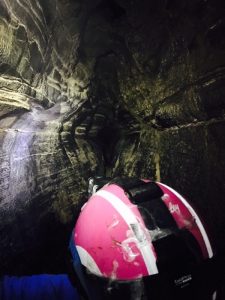
This is no accident. Most caves are too tight and technical to have any real commercial appeal, and thus escape the marketing efforts of for-profit operations looking to drive visitors to a site. Much of the land containing wild caves is either donated to or purchased by organizations like the Northeast Cave Conservancy (NCC) or the National Speleological Society (NSS), which are made up of cavers interested solely in exploration and preservation. As a result, most cavers are what I’d call cautiously welcoming. They want to share the joys of caving while ensuring caves aren’t destroyed, vandalized, overvisited, closed due to misuse and careless injury, or accessed during winter (some caves) to the detriment of endangered, hibernating bats. For this reason, posting cave directions online is frowned upon. Keeping this information primarily word-of-mouth means anyone willing to do the necessary digging to locate caves will likely be invested in protecting the resource.
I made the leap from merely curious to actually entering a wild cave through my cousin, Don, who did 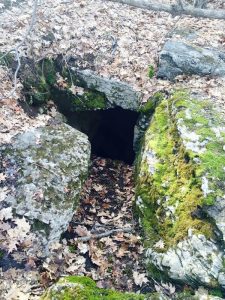 some caving as a teenager and restarted a few years ago by contacting the NCC and joining a group outing. The more caves he explored with the group, the more trust he earned, and the more cave locations he learned. In late February, after I mentioned my longtime interest in caving, he invited me and my children, David, 10, and Daisy, 8, to Wynd Cave near Thacher State Park in Voorheesville, NY.
some caving as a teenager and restarted a few years ago by contacting the NCC and joining a group outing. The more caves he explored with the group, the more trust he earned, and the more cave locations he learned. In late February, after I mentioned my longtime interest in caving, he invited me and my children, David, 10, and Daisy, 8, to Wynd Cave near Thacher State Park in Voorheesville, NY.
We purchased standard caving equipment – gloves, kneepads, helmet, headlamp, and two additional independent light sources (three total) per person – and joined Don at the trailhead on an unseasonably warm winter morning. After hiking roughly a mile through the woods, we turned off the worn path and stopped at a small, rocky outcropping with a dark sinkhole in the center.
We put on our gear, powered our headlamps, and disappeared one by one into an opening not much bigger than a standard computer monitor. Over the next two hours, we explored 400 feet of limestone cave,  including some sections high enough for standing with our arms raised, and others so small they could only be accessed by belly crawling through water with no more than two feet of space between the floor and ceiling. Wynd proved to be a great introductory cave, free of technical passages but featuring all of the twisting rooms, ancient rock formations, and varied terrain of larger, more difficult caves. We also saw a few sleeping bats, found an old coin, and located a signature from notable Thacher Park explorer T.C. Hailes, dated 1883.
including some sections high enough for standing with our arms raised, and others so small they could only be accessed by belly crawling through water with no more than two feet of space between the floor and ceiling. Wynd proved to be a great introductory cave, free of technical passages but featuring all of the twisting rooms, ancient rock formations, and varied terrain of larger, more difficult caves. We also saw a few sleeping bats, found an old coin, and located a signature from notable Thacher Park explorer T.C. Hailes, dated 1883.
It wasn’t until we stepped back into daylight that I truly caught the caving bug. As we returned to the surface, a jogger spotted us through the trees and turned off the trail to meet us at the cave entrance. He had never noticed Wynd Cave before, but he mentioned exploring a different cave on the face of a nearby cliff. In that moment I experienced what would become my favorite part of caving – the excitement over learning of a new cave, the search for it, and the eventual payoff that comes from discovery and exploration.
Over the past few months we visited more than a dozen caves in Albany, Rensselaer, and Schoharie counties, each with its own personality, challenges, and beauty. I’ve been literally up to my eyeballs in cave water; squirmed through tight, tiny passages inch by inch; stood beneath a 50-foot underground shower; 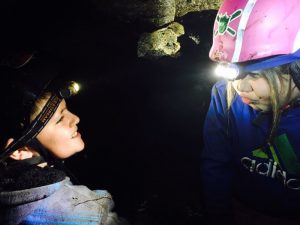 basked in warm rays from a natural skylight; encountered porcupines, salamanders, and fish; and plucked a harmless but giant spider from my daughter’s gloved hand (making sure not to tell her about it until after). I’ve been fortunate to share these experiences with my children, and I’ve watched them overcome fear and build confidence as they conquer challenges formed by nature over millions of years.
basked in warm rays from a natural skylight; encountered porcupines, salamanders, and fish; and plucked a harmless but giant spider from my daughter’s gloved hand (making sure not to tell her about it until after). I’ve been fortunate to share these experiences with my children, and I’ve watched them overcome fear and build confidence as they conquer challenges formed by nature over millions of years.
I’m thankful to have found caving and what I know will be a lifelong pursuit. And I’m excited about what comes next – new caves to explore, rumored caves to discover, and the ability to share the journey with my family.
A few notes for anyone interested in caving …
- The greater Capital Region is teaming with caves. Clarksville Cave, located just outside Albany in Clarksville, NY, is the most popular wild cave in the Northeast. It has 4,800 feet of passages and three entrances. Go hunting for it, or contact the NCC to connect with experienced cavers to visit Clarksville Cave or many other wild caves in the area.
- Caves remain the same temperature year-round, usually about 50 to 55 degrees. Dress accordingly.
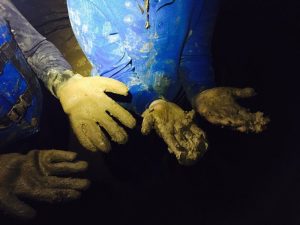
- Standard cave equipment includes a helmet, headlamp, kneepads, gloves, and two additional independent light sources (for a total of three). Wear boots or other footwear with good traction and support. Many cavers wear coveralls and some even wear wetsuits as a base layer. Don’t wear loose clothing – it will get caught and torn.
- Bring an extra set of clothes for the ride home. You’ll be filthy when you exit a cave, and oftentimes soaking wet, too.
- Caving groups should have at least three cavers, including one has led caving trips before and is familiar with the cave you’re exploring. Also, make someone on the surface is aware of your trip and your intended return time.
- Follow any rules posted at cave preserves or on the NCC and NSS websites, which provide information about many caves in the region, including cave maps, photos, and when they’re open. Some caves close in winter to protect endangered, hibernating bats.
- Be safe, do no harm, and have fun!
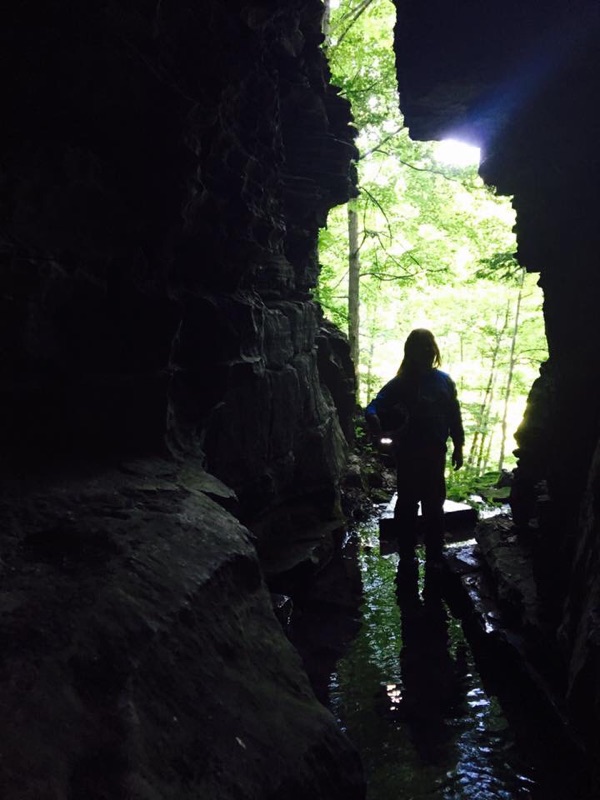
 The Daily Dose
The Daily Dose
 David Filkins
David Filkins
Shannon
Great article- but you really need to add something about White Nose Syndrome and the importance of cleaning your gear thoroughly after each trip!
David Filkins
In addition to staying out of caves that hold hibernating bats, keeping your gear clean is absolutely another good way to prevent the spread of disease and help protect bat populations. Thanks for mentioning it!